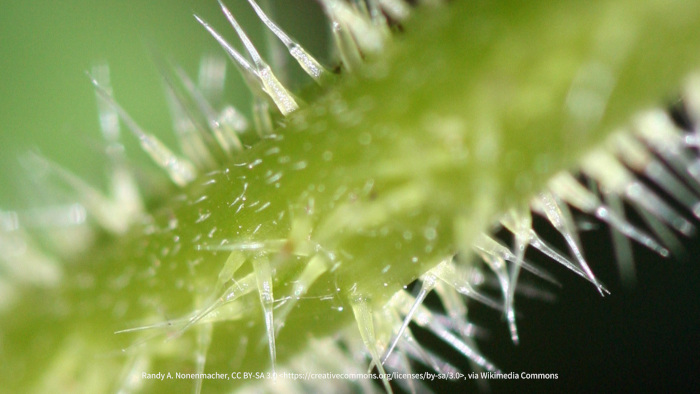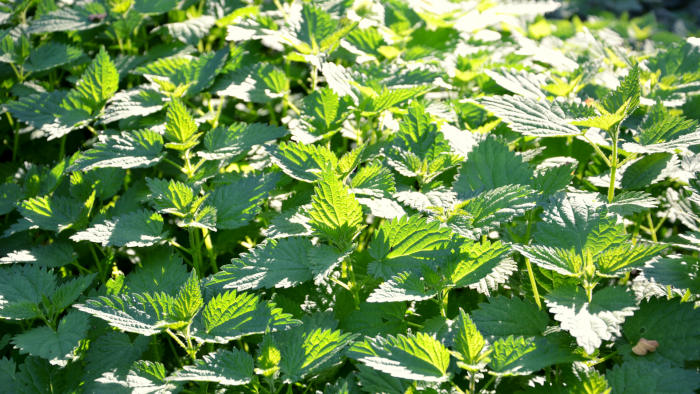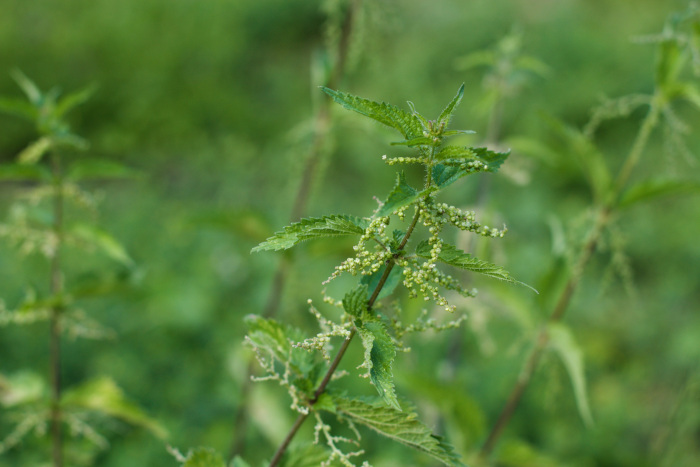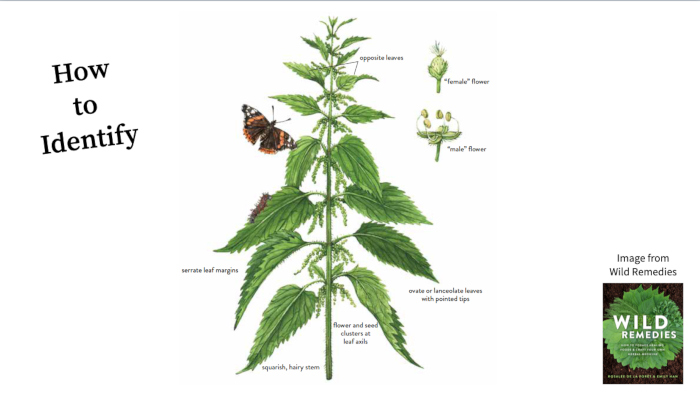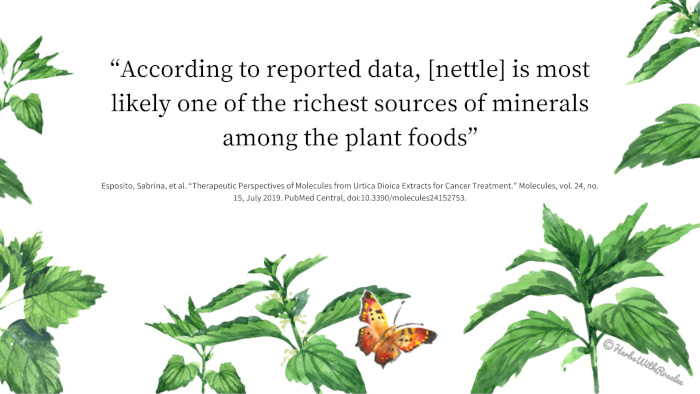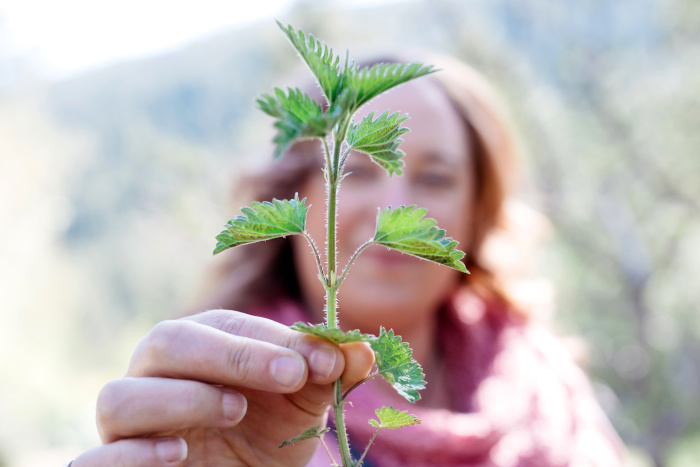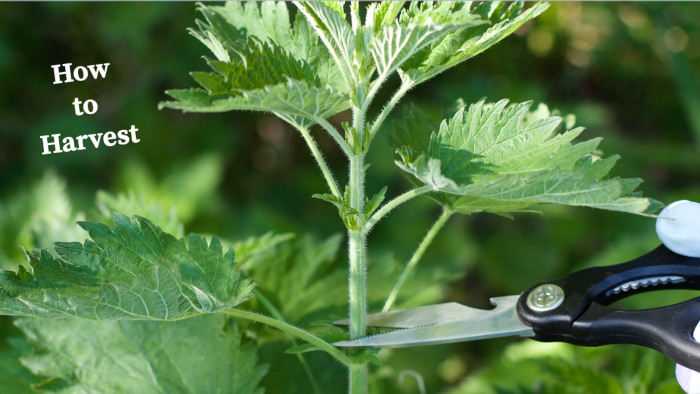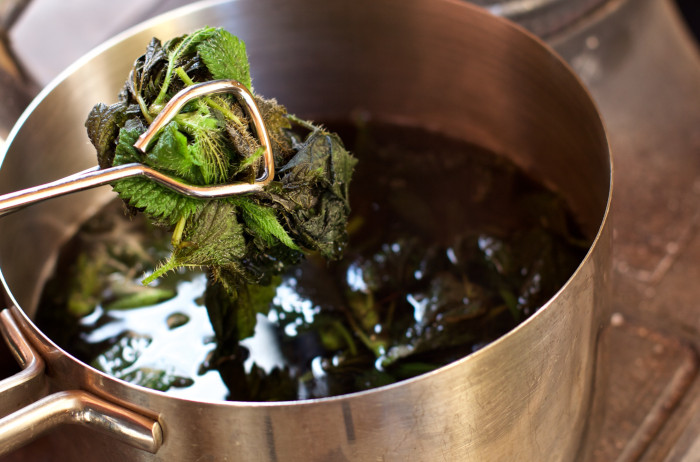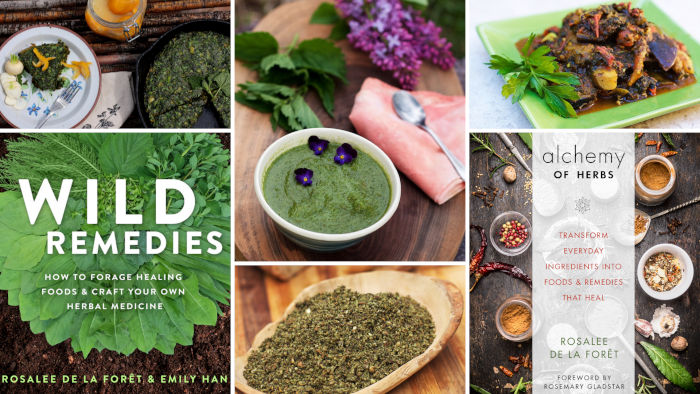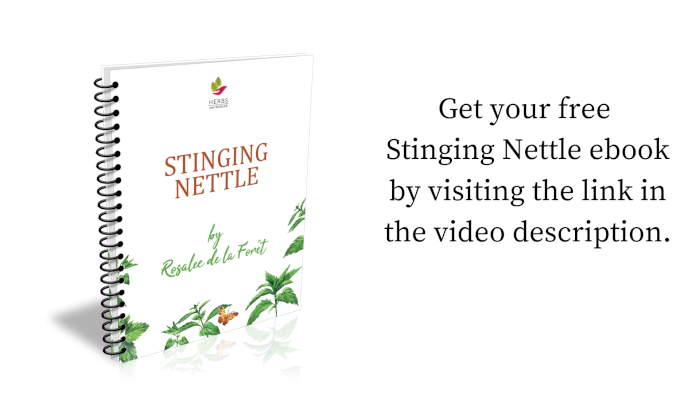Get weekly tips, recipes, and my Herbal Jumpstart e-course! Sign up for free today.
Benefits of Nettle Leaf
Share this! |
|
-- TIMESTAMPS --
00:00 - Introduction to stinging nettle
01:18 - What are stinging nettles? (Urtica dioica)
02:44 - Nettle as a nutritive plant
05:53 - Stinging nettle for menopause hot flashes
06:33 - Stinging nettle leaf for seasonal allergies
07:18 - Nettle for inflammation and Type 2 diabetes
08:28 - Nettle for decreasing arthritis pain
10:25 - Nettle leaf as a diuretic
11:16 - Working with stinging nettle (Urtica dioica)
13:16 - Side effects of stinging nettle
15:20 - Stinging nettle ebook
Thanks for watching my Benefits of Nettle Leaf video!
Are you ready to learn more about stinging nettle?
I have a beautiful e-book for you! It’s yours for free when you join my herbal community
and get my weekly newsletters filled with my best herbal tips, recipes and insights.
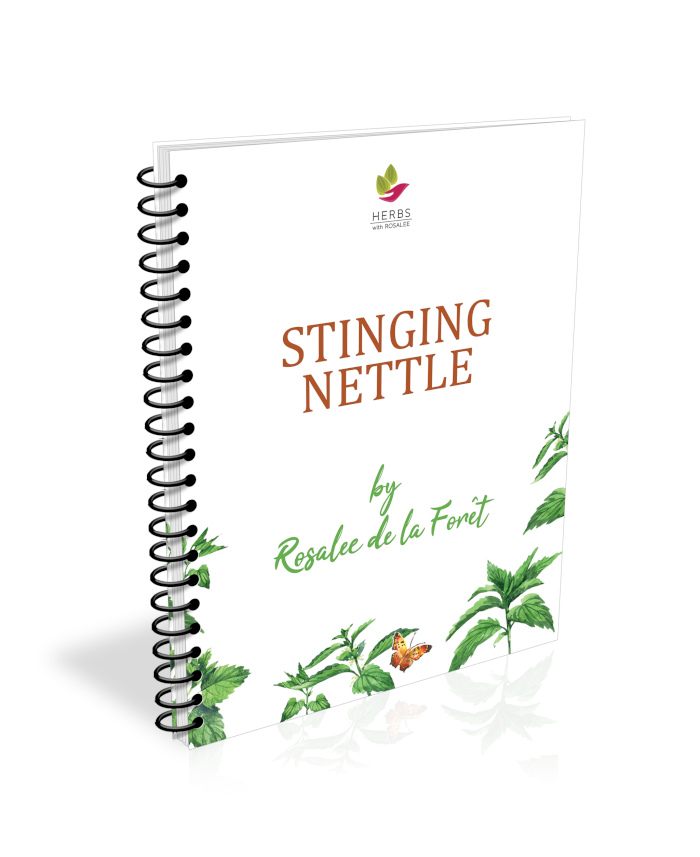
Sign me up!
Transcript from the Benefits of Nettle Leaf Video
Stinging nettles demand your attention! And not just because they sting! But also because they offer so many powerful health benefits. In this video I’m going to share many of my favorite ways that this medicinal plant can heal as well as some stinging nettle side effects that you should look out for.
Herbalists use nettle both as a highly nourishing food and as medicine. Stinging nettle can restore energy levels, help with natural detoxing (by supporting elimination organs), relieve seasonal allergies, and strengthen bones, hair, nails, and teeth... Actually, it might be easier to discuss what nettle doesn’t do!
Hello! I’m Rosalee de la Forêt, herbalist, teacher, and bestselling herbal author. I’m here to share trusted herbal knowledge so that you can get the best results when using herbs for your health.
While you’re here, let me know in the comments below your favorite ways to enjoy nettle. It’s always interesting and insightful to hear the experiences of plant lovers out there. And, your suggestion may also inspire others!
Okay, let’s dive in.
Benefits of Nettle Leaf: What Are Nettles?
Stinging nettle is a somewhat plain-looking plant, but if you happen to brush by a patch it will jump out and demand your attention.
Stinging nettle is protected by needle-like projections that easily inject irritating substances into the skin. As a result, many people are introduced to it in an abrupt and often uncomfortable way. However, once you get to know this powerful herb, it’s easy to fall in love with it.
Nettle is an herbaceous perennial that can grow to about 3-6 feet in height (about 1-2 meters). It is both a native and introduced plant in North America and likes to grow in disturbed soils that are protein rich. It prefers damp soils. The genus of nettle is Urtica. There are several species with dioica being the most common.
Stinging nettle grows on long stalks that have a square stem with jagged simple leaves that grow opposite. As mentioned, small needle-like projections cover the stalk and leaves of most species (however, “stingless” nettles do exist.)
Small flowers grow in the leaf axils in the summer, which turn to green fruits by the late summer.
My book, Wild Remedies, includes more tips on identifying stinging nettle.
Benefits of Nettle Leaf as a Nutritive Plant
Nettle is nutrient-dense and eating it regularly can supply you with the needed vitamins, minerals, and phytonutrients that are most likely missing from your diet.
What do I mean by that?
Over time, our foods have been slowly losing their nutrients. Some of this is due to the depletion of agricultural soils and some is due to our own selective choices.
Let’s take apples as an example. Wild ancient apples were small and bitter and we’ve selectively bred them to be bigger and sweeter. While our newer apples may taste better than their ancestors, they are alarmingly lower in nutrients. In her book, Eating on the Wild Side, Jo Robinson says that, when comparing modern apples to their ancestral counterparts, some wild varieties contain 100%-400% more nutrients than the apples you find at the grocery store!
What does this loss of nutrients mean for us? It is getting increasingly hard to get our daily recommended amount of nutrients within a reasonable caloric intake.
In other words you would have to eat a ridiculous amount of “modern” apples to get the same nutrients available in their wild counterparts (or even what was being eaten two generations ago).
Back to stinging nettle…
Stinging nettle is a powerful source of many different nutrients. It is a notable source for calcium, manganese, magnesium, vitamin K, carotenoids, and protein.
One review states that “According to reported data, [nettle] is most likely one of the richest sources of minerals among the plant foods”.1
Herbalists specifically use these nutrient-dense qualities of nettle to restore health in a variety of ways.
Because of its mineral content, nettle is a favorite for strengthening bones, hair, nails, and teeth.
It’s often combined with oatstraw (Avena sativa) for addressing osteopenia and osteoporosis.
Are you feeling run down? …fatigued? …or otherwise dragging yourself through your day? Nettle leaf can support healthy energy levels. It may do this through a variety of actions, but at least part of that action comes from its nutrient-dense qualities.
Nettle infusions are also a reliable way to boost iron levels. I’ve spoken to many women who have chosen to use nettle instead of iron supplements in the early stages of pregnancy to increase their iron levels. And restoring iron levels can also relieve fatigue.
Some people experience muscle cramping due to nutrient deficiencies. Regular ingestion of nettle infusions can restore mineral reserves and relieve menstrual cramps or leg cramps.
This was a short list of ways that nettle may improve some nutrient-deficiency symptoms. Restoring nutrient deficiencies can have a myriad of positive effects.
Perhaps this is why herbalist David Hoffman wisely recommends, “When in doubt, choose nettle.”
Benefits of Nettle Leaf for Menopausal Hot Flashes
Stinging nettle may help to reduce hot flashes associated with menopause!
In a 2019 double-blinded randomized controlled trial, 68 patients who reported at least 20 hot flashes per week were treated for 7 weeks then followed up for 4 weeks. This was an interesting study that also looked at acupuncture. The conclusion of the researchers was that “Urtica dioica can decrease menopausal hot flashes and increase the quality of life of postmenopausal women better than a placebo.”2
Benefits of Nettle Leaf for Seasonal Allergies
Nettle is commonly used to decrease seasonal allergic responses, such as hay fever.
A 2009 in-vitro study concluded that nettle affects key receptors and enzymes associated with allergic rhinitis.3 Nettle has also been shown to decrease inflammatory markers, such as C-reactive protein, which could also play a role in relieving seasonal allergies.4
I recently shared a video on my YouTube channel that goes more in depth about working with stinging nettle for allergies, including different forms of nettle to reach for, dosage, and duration.
Check out that video here to get more specific information about nettle leaf and allergies.
Benefits of Nettle Leaf for Inflammation and Type 2 Diabetes
There have been numerous studies showing nettle’s powerful ability to help people with type 2 diabetes.
Type 2 diabetes is a chronic inflammatory disease and patients diagnosed with this disease often have elevated markers for oxidative stress.
Studies have shown that patients with type 2 diabetes who take nettle have increased antioxidant levels and decreased inflammatory markers.5,6
Other studies have shown that taking stinging nettle daily can result in significantly lower fasting blood glucose levels.7,8
These are potentially powerful results for people facing a disease known for its chronic inflammatory effects.
Of course, type 2 diabetes is a chronic and complex illness that isn’t simply solved with one plant. Diet, lifestyle, and other considerations are also key to addressing this disease. However, all of these studies indicate that nettle has multiple and powerful benefits for people with type 2 diabetes.
What’s more is that I’ve no doubt that many people could benefit from these anti-inflammatory effects of nettle.
Benefits of Nettle Leaf for Decreasing Arthritic Pain
Arthritis is another chronic illness with a root cause of inflammation. As we saw in the studies involving people with type 2 diabetes, taking nettle internally decreases inflammatory markers. Specifically related to arthritis, herbalist Paul Bergner reported on a German study involving patients with rheumatoid arthritis who had decreased inflammatory substances in their blood after taking a nettle leaf extract for only 21 days.9
Nettle isn’t just beneficial when taken internally. Taking a cue from folkloric use of nettles, two research studies looked at the effects of the topical use of the fresh plant directly slapped on painful arthritic joints. This is a practice called “urtication.”
“Whoa! Hold on there,” you might be thinking. “Doesn’t that make the area hurt even more?” Yes and no.
One pilot study showed that patients with chronic knee pain did not find nettle’s sting to be more than a minor irritation.10
Another study showed that, after only a week, patients with arthritis in their thumb found significant improvements in their pain as compared to placebo.11
My first herb teacher, Karen Sherwood, told me a story from when she was visiting Germany. While there, she spoke with the women elders from a small village who made regular visits to the nettle patches in order to sting their hands and relieve their arthritic finger joints. This practice has most likely existed for hundreds, if not thousands, of years.
I’ve personally found that nettle can relieve muscle pain. Years ago I was having severe neck issues that were causing intense pain. Finding myself in a nettle patch, I asked a friend to do the honors to brush the fresh nettles on my neck and, sure enough, I felt almost instant relief that lasted for several days.
Benefits of Nettle Leaf as a Diuretic
Nettle is a mild to moderate diuretic that seems to affect some people more than others. This action can be beneficial by helping to drain simple edema or other congested fluids from the body.
Nettle can also have a tonifying and strengthening effect on the urinary system. In my early 20s, I had recurring urinary tract infections, but after drinking nettle infusions daily for many months, I stopped getting them altogether. Of course, other factors could be attributed to that, but I have recommended this to many others with similar effect, leading me to believe nettle has a strong part to play in tonifying urinary health.
Benefits of Nettle Leaf: Uses
Now that you’ve just heard about all the amazing benefits of stinging nettle you may be wondering how you can start working with it. There are several ways...
Stinging nettle can be eaten freely as food but it needs to be properly prepared. Harvest the leaves while the plant is young and before it flowers. Most people prefer to harvest using gloves to avoid that nettle sting. As with all plants, it’s important to harvest them in a regenerative way to ensure the health of the plants and future harvests.
If you harvest the top portion of the plant, leaving behind bottom leaves, it will grow back!
In cooler climates, it’s possible to tend a nettle patch and keep harvesting the leaves well into summer.
Once harvested, blanch the leaves in boiling water for two minutes before using them as you would any cooked green. Some of my favorite ways to eat nettle include nettle soup, lasagna, stir-fried greens, spanakopita, green smoothies, and pesto.
I have chapters on nettle in both of my books, Alchemy of Herbs and Wild Remedies.
Wild Remedies has more information on harvesting nettles.
Both books have my favorite nettle recipes, including Stinging nettle lasagna, nettle leaf dukkha, Stinging Nettle and Asparagus Soup, and a Nettle Frittata.
When working with stinging nettle as medicine it can be used dried as a tea or prepared as a fresh plant tincture (alcohol extract) or vinegar. Freeze dried products (powder or capsules) are also available.
Here’s my dosage suggestions for nettle leaf.
- Nettle leaf tea: up to 1 ounce (30 grams) of dried herb made into tea per day
- Fresh nettle tincture: (1:2, 50-90% alcohol) 60-90 drops 3-7 times a day
Stinging Nettle Side Effects
I often joke that the stinging nettles side effects include luxurious hair, strong bones and teeth, and increased energy.
Stinging nettle is a very safe plant! The Botanical Safety Handbook gives nettle the highest safety rating. It also reports that in a review of studies with over 16,000 people there were no serious adverse effects reported.12
But, there are some common unwanted stinging nettles side effects that are worth knowing about.
Nettle is a slightly cooling plant that is very drying. This is probably due to its diuretic properties, but there may be other factors as well.
For some, nettle can be overly drying. Symptoms of nettle being too drying include having symptoms of dryness such as dry skin, hair, a dry mouth that is not relieved with drinking water, dry eyes, constipation, and headaches.
If you start working with nettles but have symptoms of too much dryness then here’s what I recommend:
#1. Use less nettle. Nettle is a food-like herb that is often used in very large amounts. If you happen to be using a lot of nettle, then take less and see if that helps.
#2. Wait it out. If the symptoms aren’t very severe, then you could wait them out to see if your body naturally normalizes to nettle’s effects. Give it about two weeks to see improvements.
#3. You can formulate nettle with other herbs and even foods to offset that drying quality. I often add a bit of marshmallow root and/or oatstraw to my nettle infusions. Other moistening herbs you can match with nettle include violet leaf, linden, and all mallows. You can also look at your entire day to see how you can add moistening herbs and foods into your life. Some things to consider are: How much water are you drinking a day? Are you getting a good amount of healthy fats? Eating moistening foods and vegetables, like okra, could also be something to consider.
Wow! I know that’s a lot of information about nettles! But there’s so much to learn from this amazing plant. And, we’ve just scratched the surface! I’ve mainly talked about the leaves but the roots and seeds have their own healing gifts as well.
To help you get to know stinging nettle better I’ve created an entire ebook for you!
It’s yours for free when you join my herbal community where I send out weekly emails with my best herbal tips and recipes.
See you next time.
And if you want to learn more about nettle in general, make sure to read my monograph on the uses of nettles here.
Benefits of Nettle Leaf Citations
Click to show/hide.
Rosalee is an herbalist and author of the bestselling book Alchemy of Herbs: Transform Everyday Ingredients Into Foods & Remedies That Healand co-author of the bestselling book Wild Remedies: How to Forage Healing Foods and Craft Your Own Herbal Medicine. She's a registered herbalist with the American Herbalist Guild and has taught thousands of students through her online courses. Read about how Rosalee went from having a terminal illness to being a bestselling author in her full story here.
